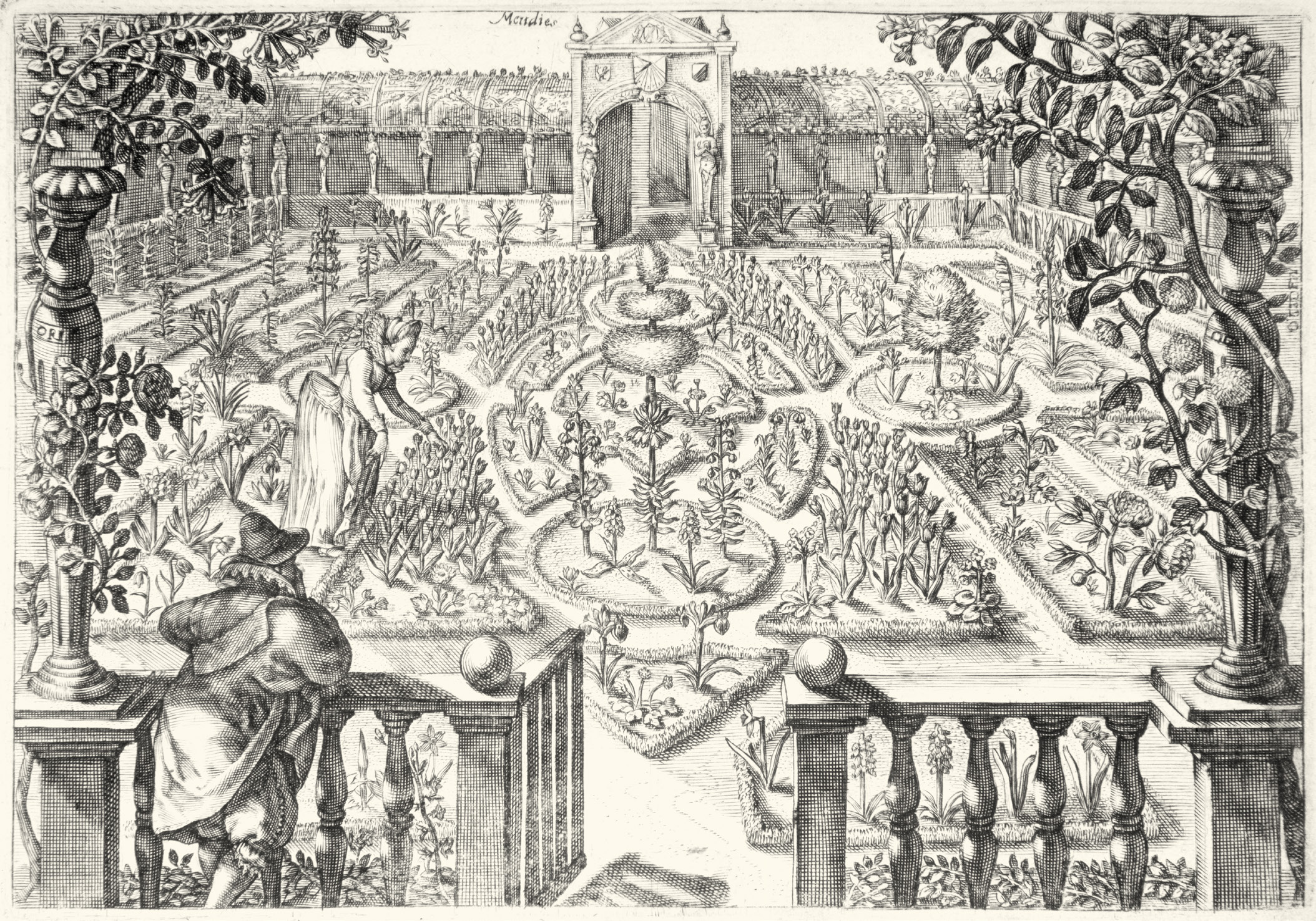This print by Crispijn de Passe might give a wrong impression of what the gardens in New Amsterdam actually looked like. It should be noted that de Passe’s print is an ideal representation of a courtyard garden in early 17th- century Northern Europe: such an intricate layout and rare plant materials - from tulips to Crown Imperial and fritillaria - only would have been found in the leisure gardens of the nobility, or the very rich merchant class. 17th Century Dutch gardens followed a geometrical design tradition in layouts for palaces and villas for the very wealthy, as well as smaller plots for the burgher class.
Aside from the fact that the gardens in New Amsterdam (at least initially) didn’t have an ornamental purpose, but were used to grow plants for sustenance, the extreme expense and rarity of tulips and other bulbous plants precluded their presence in New Amsterdam until the late 17th century, when Adriaen van der Donck notes the presence of roses and tulips.
See Joel W. Grossman https://encyclopedia.nahc-mapping.org/sites/default/files/2024-01/DEHALV~1.PDF, p. 9: “None of the seventeenth-century plants excavated from lower Manhattan suggest an ornamental flower garden.”
Often the 'quartered' garden plot at the back of each small house included potherbs, medicinal plants, and food production that was part of each New Netherland family's daily lives. Certainly, the DWIC garden followed this formal geometry based on the drawing of the Castello plan.
See a detailed article on the archeology of plant life in New Amsterdam by Joel Grossman, PhD. here. Courtesy of the Holland Society of New York.
See also the attached article by Vanessa Bezemer Sellers for more detail.

Fig 4.21 Crispijn de Passe, Hortus Floridus, Utrecht 1615, copyright New York Botanical Garden https://www.nybg.org/

